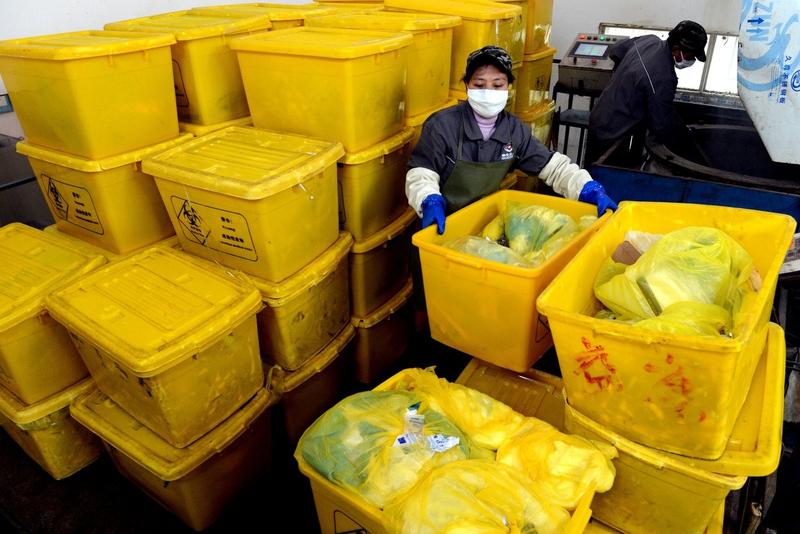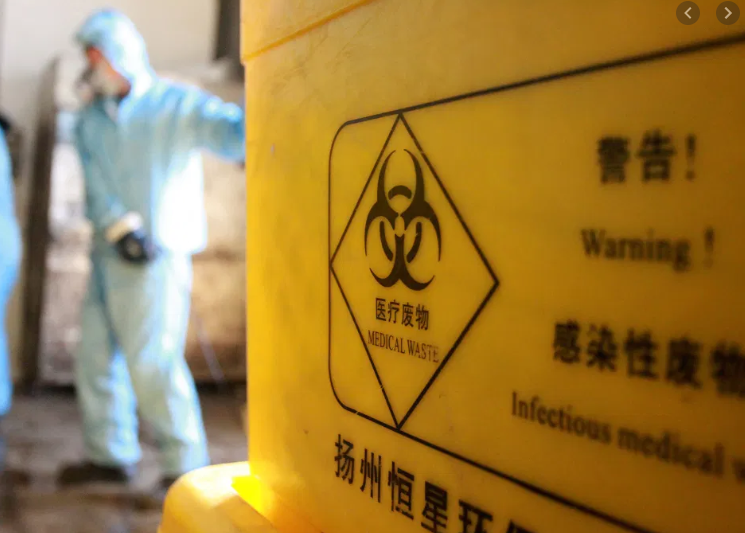Massive Testing in China is Creating a Medical Waste Nightmare
As the world grapples with the COVID-19 pandemic, China has emerged as a leader in mass testing. The country has conducted tens of millions of tests in recent months, resulting in a massive increase in the amount of medical waste being generated. Much of this waste is being incinerated, which releases harmful toxins into the air. There is also a growing concern that the incorrectly disposed of used testing kits could lead to a new wave of infections. While mass testing is essential for containing the pandemic, the associated waste problem is becoming increasingly difficult to ignore. China will need to find a sustainable solution to this problem if it is to continue its mass testing program.
Mass testing appears is set to stay as Chinese authorities insist zero-COVID has allowed the world’s most populous nation to avoid a public health catastrophe.
But experts say the approach — a source of political legitimacy for the ruling Communist Party — creates a sea of hazardous waste and a mounting economic burden for local governments who must put tens of billions of dollars into funding the system.
Beijing has positioned itself as an environmental leader, cracking down on air and water pollution while setting the goal of making its economy carbon-neutral by 2060, a target experts say is untenable given the current trajectory of investments in coal.

The country’s heavy reliance on mass testing has been credited with helping to prevent a second wave of infections, but it has also generated huge amounts of hazardous waste. In Beijing alone, more than 1,000 tons of medical waste is being produced each day, according to the city’s environmental protection bureau. And while the central government has pledged to cover the costs of testing, local authorities are shouldering much of the financial burden. In Shenzhen, for example, the cost of mass testing was estimated at around 10 billion yuan (US$1.5 billion) in November alone.
Mass Testing Poses New Medical Waste Trash Challenges
Critics say the heavy emphasis on mass testing is diverting resources away from other areas of public health, such as immunization and disease surveillance. They also point out that China’s success in containing COVID-19 is due in large part to its extensive surveillance system, which includes tracking people’s movements via their mobile phones.

Mass testing appears set to stay as Chinese authorities insist zero-COVID has allowed the world’s most populous nation to avoid a public health catastrophe. But experts say the approach — a source of political legitimacy for the ruling Communist Party — creates a sea of hazardous waste and a mounting economic burden for local governments who must put tens of billions of dollars into funding the system. Beijing has positioned itself as an environmental leader, cracking down on air and water pollution while setting the goal of making its economy carbon-neutral by 2060, a target experts say is untenable given the current trajectory of investments in coal. The country’s heavy reliance on mass testing has been credited with helping to prevent a second wave of infections, but it has also generated huge amounts of hazardous waste. While mass testing may have helped to prevent a worse outbreak in China, it remains to be seen whether this approach is sustainable in the long term. With rising costs and mounting environmental concerns, there is growing pressure on authorities to rethink their strategy.
Biomedical waste, if not disposed of properly, can present risks to the environment and human health by contaminating soil and waterways. Different regions have responded to this issue by imposing various restrictions; however, some areas have lifted these restrictions as cases of contaminants have decreased. Although nationwide data on the waste footprint has not been disclosed, it is known that Shanghai produced 68,500 tons of medical waste during its recent COVID lockdown, this daily output was six times higher than what is considered normal. In China, local authorities are responsible for separating, disinfecting, transporting, and storing COVID waste before finally disposing of it. Usually, this disposal is done by incineration. However, rural areas in China often lack the resources to properly dispose of biomedical waste, leading to contamination issues. Consequently, it is essential that biomedical waste is dealt with in a safe and timely manner to avoid any negative impacts on the environment or human health.

Is Over Testing a Waste of Money?
Beijing has urged provincial capitals and cities with at least 10 million people to set up a test site within a 15-minute walk of every resident. Top leaders also expect local governments to foot the bill for testing at a time when many are struggling to balance the books. Expanding the model to the whole of the country could cost between 0.9% and 2.3% of China’s gross domestic product, Nomura financial analysts said last month. Authorities are also likely to miss positive cases as the omicron variant spreads rapidly and is harder to detect than other strains. In light of these concerns, it remains to be seen how effective this strategy will be in containing the spread of the virus and if it makes financial sense or not – time will tell.

